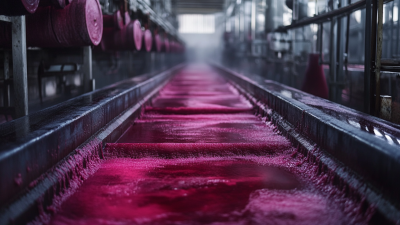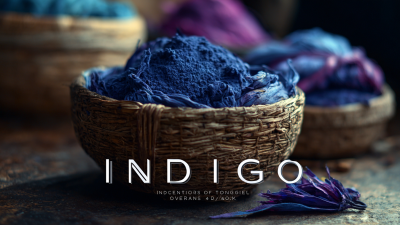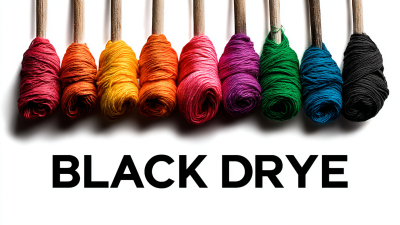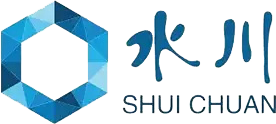In the quest for sustainable and eco-friendly alternatives in the textile industry, Liquid Indigo emerges as a groundbreaking solution that not only enhances dyeing processes but also significantly reduces environmental impact. This innovative form of indigo, a natural dye commonly derived from the indigofera plant, offers numerous benefits over traditional dyeing methods that often rely on harsh chemicals. By exploring the science behind Liquid Indigo, we can uncover how its unique properties promote a more sustainable approach to coloring fabrics while minimizing water pollution and chemical waste. As the demand for environmentally responsible fashion grows, understanding the advantages and applications of Liquid Indigo becomes imperative for both manufacturers and consumers. This introduction serves as a gateway into a deeper analysis of how Liquid Indigo is revolutionizing the textile industry and paving the way for greener practices in dyeing processes.

Liquid indigo, a vibrant dye derived from the indigo plant, has captivated the textile industry with its unique properties and eco-friendly profile. Unlike conventional indigo dyes, which often rely on toxic chemicals in the dyeing process, liquid indigo is predominantly water-based, significantly reducing environmental pollution. According to a report from the Textile Research Journal, water-based dyes like liquid indigo can result in up to 30% lower carbon emissions compared to their conventional counterparts.
The composition of liquid indigo includes high concentrations of indigo extract combined with stabilized emulsifiers that facilitate an effective dyeing process. This formulation not only enhances color potency but also ensures that the dye binds effectively to fibers, leading to vibrant and long-lasting hues. Industry data indicates that using liquid indigo can improve dye uptake by as much as 20%, providing manufacturers with a cost-effective solution without compromising quality.
**Tips:** When working with liquid indigo, always pre-wash your fabric to eliminate any residues that may hinder dye adhesion. Additionally, consider experimenting with different mordants to optimize the dyeing process and achieve a spectrum of shades. For optimal results, maintain consistent temperature and pH levels during dyeing.

Liquid indigo has emerged as an innovative alternative to traditional indigo dye sources, primarily derived from the plants Indigofera tinctoria. The conventional process of producing indigo dye involves extensive water resources, labor-intensive harvesting, and chemical treatments that can lead to environmental degradation. In contrast, liquid indigo production typically utilizes synthetic processes that minimize water usage and reduce chemical runoff. This makes it a more sustainable option for the textile industry, promoting eco-friendly practices.
Moreover, the efficiency of liquid indigo is another significant advantage over its traditional counterpart. The application of liquid indigo allows for better absorption and more vibrant color outcomes, which can reduce the amount of dye needed per application. This not only conserves resources but also lessens the environmental impact associated with the dyeing process. By shifting towards liquid indigo, manufacturers can significantly enhance their sustainability profile while maintaining high-quality dye solutions for fabric production. The comparative analysis of these two dye sources reveals that liquid indigo stands out as a more environmentally responsible choice in the global textile market.
This chart presents a comparative analysis of the environmental benefits of Liquid Indigo versus Traditional Indigo dye sources. The data illustrates significant differences in water usage, chemical use, and CO2 emissions per kilogram of dye produced, highlighting the potential advantages of Liquid Indigo in sustainability efforts.
The production of liquid indigo presents a significant opportunity to reduce water consumption compared to traditional indigo dyeing methods. Conventional indigo dyeing processes often require vast quantities of water, leading to substantial environmental strain, particularly in regions already facing water scarcity. By utilizing liquid indigo, the industry can dramatically diminish its water footprint, thereby conserving this vital resource and promoting sustainability.
In addition to reducing water use, the production of liquid indigo also minimizes the reliance on harmful chemicals commonly found in traditional dyeing processes. The transition toward eco-friendly practices not only helps to lower the overall chemical load in wastewater but also improves the health outcomes for workers in the dyeing industry and the surrounding communities. This shift towards sustainable production methods is crucial in addressing the environmental challenges posed by conventional textile manufacturing, aligning with a global trend towards greener, more responsible industrial practices.
| Aspect | Value | Unit |
|---|---|---|
| Water Use (for synthetic indigo production) | 1800 | liters/kg |
| Water Use (for liquid indigo production) | 200 | liters/kg |
| CO2 Emissions Reduction | 95 | % |
| Chemical Use Reduction | 80 | % |
| Energy Consumption Reduction | 70 | % |
The textile industry is witnessing a significant shift towards eco-friendly practices, with liquid indigo at the forefront of this movement. As consumers become increasingly conscious of sustainability, the demand for natural dye alternatives is skyrocketing. Liquid indigo, derived from plant-based sources, presents a myriad of environmental benefits, reducing reliance on synthetic dyes that often pollute waterways and harm ecosystems. Market trends indicate a promising growth potential for eco-friendly indigo products, as brands seek to align with consumer preferences for sustainable materials.

When incorporating liquid indigo into production, textile manufacturers can enhance their sustainability credentials while appealing to a broader market. Tips for brands looking to navigate this shift include sourcing indigo from certified organic cultivators and emphasizing transparency in their supply chain. Additionally, investing in consumer education about the environmental advantages of liquid indigo can further stimulate interest and demand.
As the market for eco-friendly textiles expands, brands that prioritize sustainability will likely enjoy a competitive edge. By leveraging liquid indigo, companies not only contribute to a healthier planet but also tap into a growing segment of environmentally conscious consumers. To maximize their impact, businesses should regularly assess their practices and seek innovative ways to promote their eco-friendly indigo offerings.
Liquid indigo has emerged as a revolutionary dyeing solution for sustainable fashion brands. Case studies reveal its successful implementation, showcasing how brands are minimizing environmental impact while achieving vibrant colors. For instance, forward-thinking companies are using liquid indigo to replace traditional dyeing methods, which often involve toxic chemicals and massive water consumption. Not only does liquid indigo offer a rich hue, but it also reduces water usage by up to 90% and eliminates harmful effluents.
Tips for brands looking to adopt liquid indigo include collaborating with suppliers that specialize in eco-friendly dyes. This ensures access to high-quality, sustainable indigo that meets both aesthetic and environmental goals. Additionally, brands should consider educating their customers about the benefits of using liquid indigo, creating a narrative that connects sustainability and style.
Another noteworthy example includes a sustainable denim brand that has successfully integrated liquid indigo into their production process. By doing so, they have not only reduced their carbon footprint but also attracted environmentally-conscious consumers. For brands aspiring to make a similar shift, investing in research and development can lead to innovative practices that promote sustainability in fashion.






